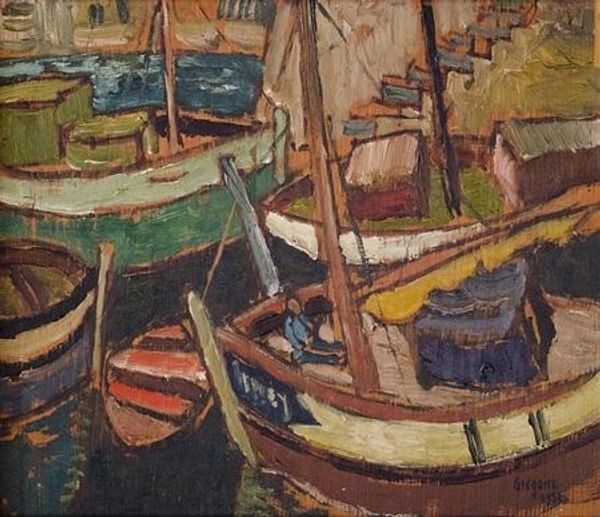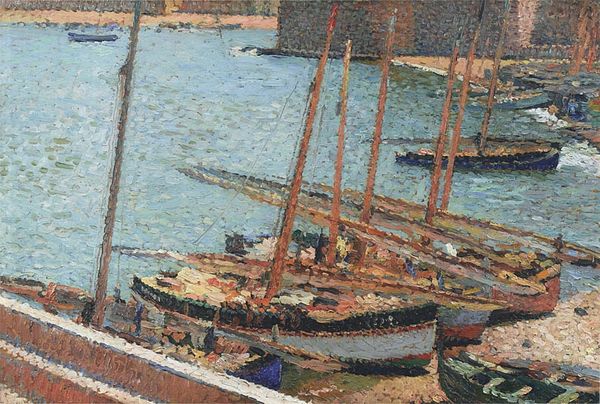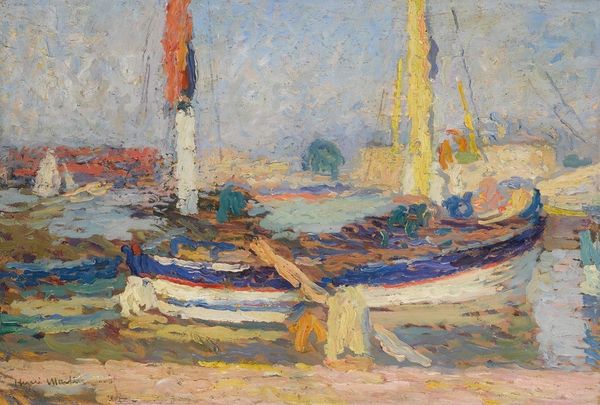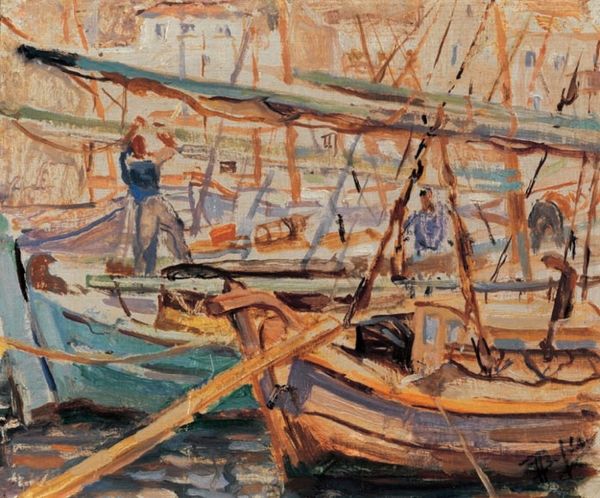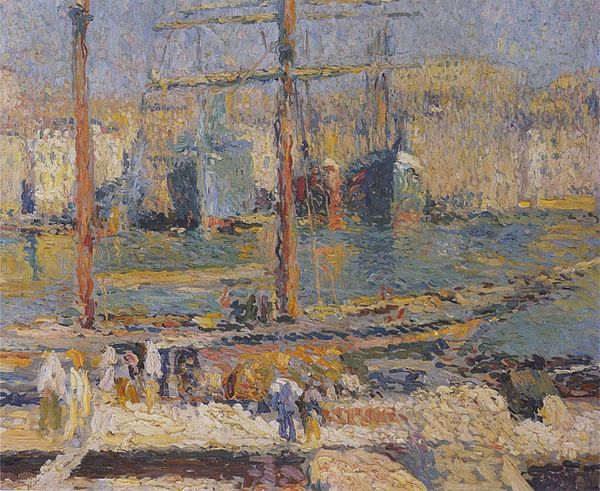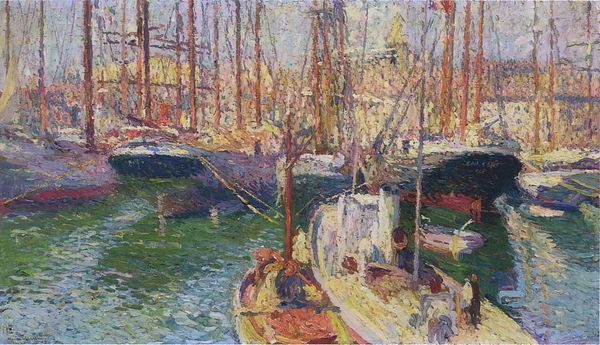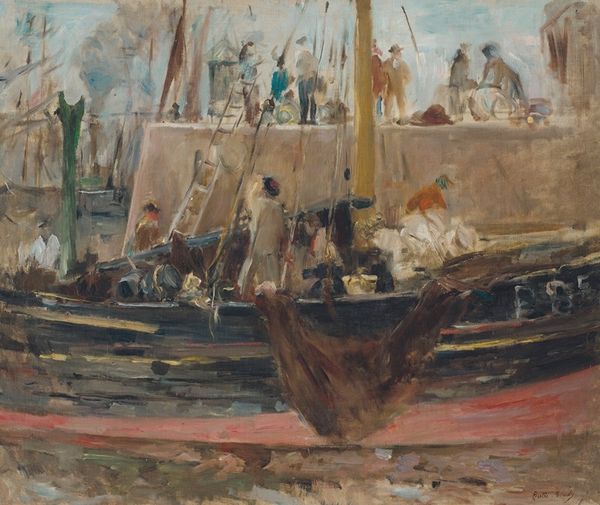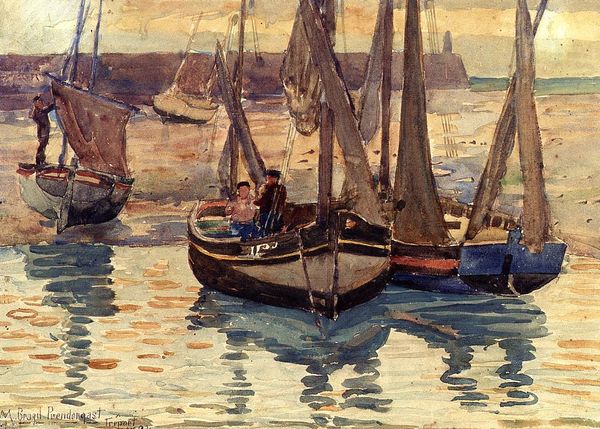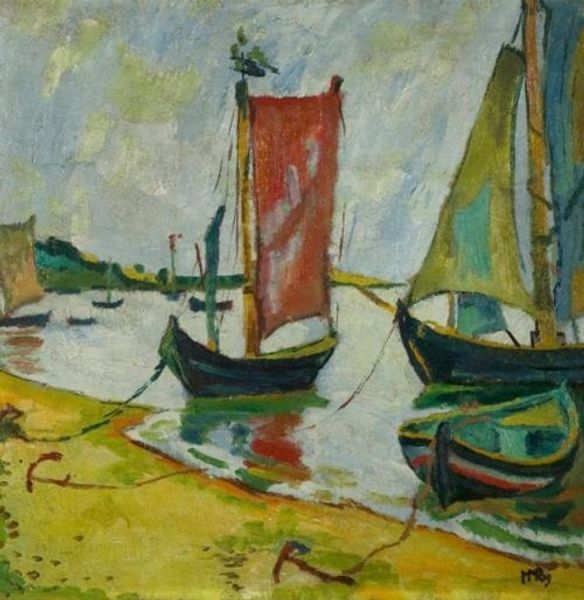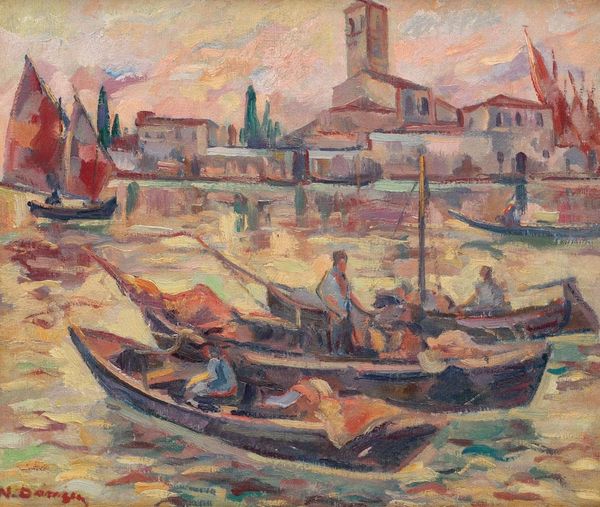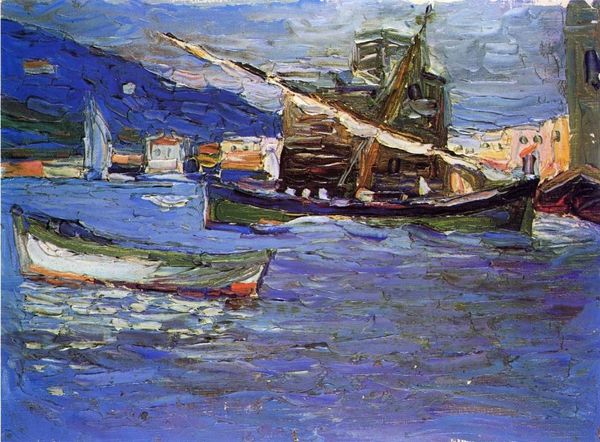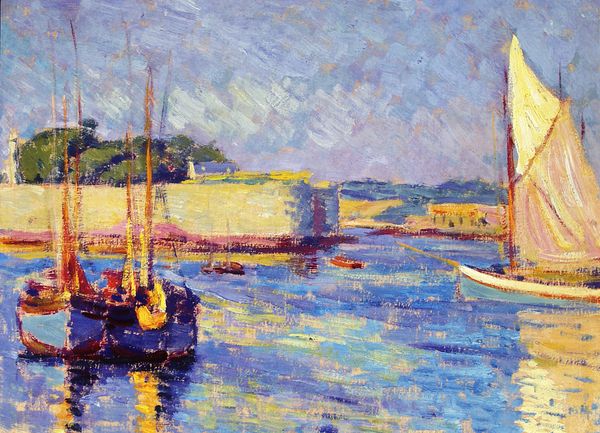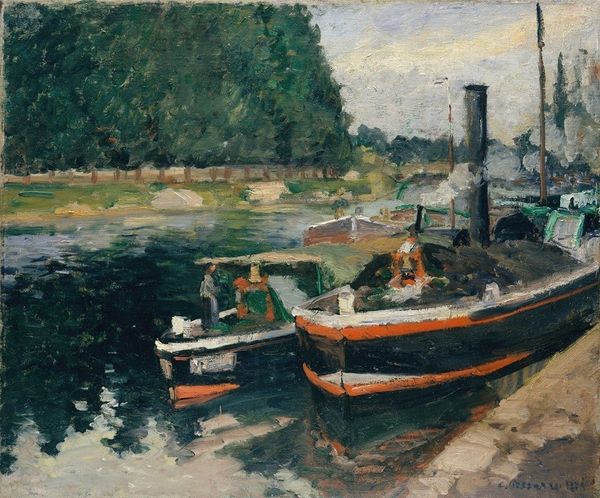
oil-paint
#
oil-paint
#
landscape
#
oil painting
#
expressionism
#
cityscape
#
expressionist
Copyright: Public domain US
Curator: Béla Czóbel's 1905 oil painting, "Czóbel 1905 Zeebrügg Bárkák," captures a vibrant waterside scene. Editor: My first impression is a certain tension; the vibrant reds and blues fight against the rather murky grey-green tones in the water, as though struggling for dominance on the canvas. Curator: The application of paint is undeniably expressionistic, marked by bold strokes and intense colors. Notice the planes formed by the brushstrokes; how do these serve the overall composition? Editor: This heavy impasto gives the scene a tactile immediacy. I am drawn to contemplate Czobel’s socio-political context. In what ways might these distorted colors suggest alienation and the unsettling conditions that characterized Europe at the turn of the century? Curator: The composition reveals a calculated arrangement, carefully considered from a formal point of view, emphasizing the play of color. See the buildings as backdrops set behind the boats in the foreground, providing the architecture that punctuates the composition overall. Editor: Absolutely. But these boats signify labor and economic activity. Consider their history; who owned and operated these vessels? And what kind of cargo did they carry? I find the implied social relations intriguing here. Curator: Perhaps. For me, the thematic tension lies in the treatment of surface—the physicality of paint being rendered, and what role its flatness plays against the picture it attempts to create. Editor: Yes, and perhaps Czóbel's distortions and emotional emphasis reflected broader social disruptions and individual struggles for recognition, resonating with the narratives of many at this moment in European history. Curator: An important reminder of the layers that coexist in this complex work of art. Editor: Precisely, inviting us to see both formal composition and broader sociohistorical themes intertwining.
Comments
No comments
Be the first to comment and join the conversation on the ultimate creative platform.
